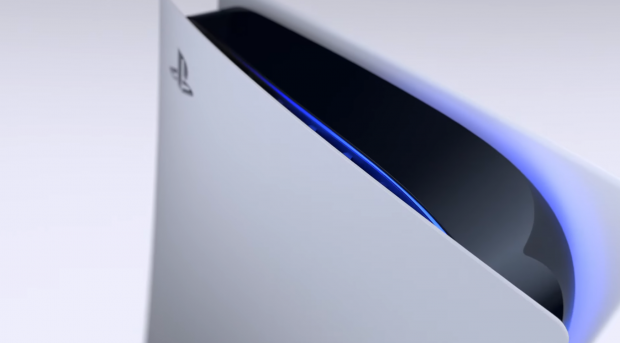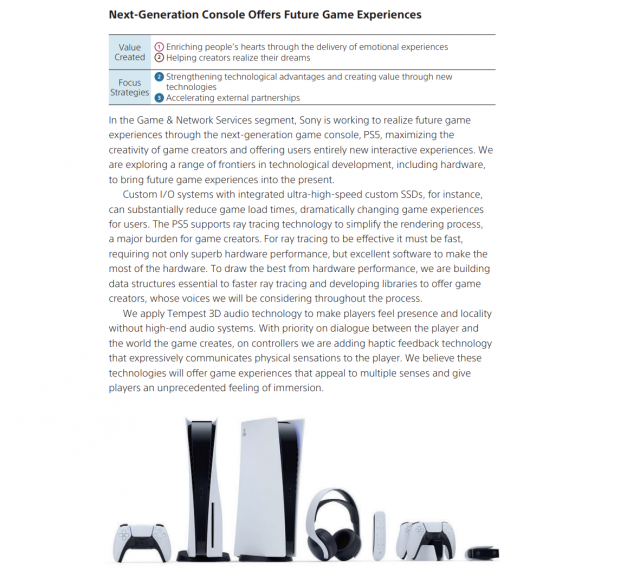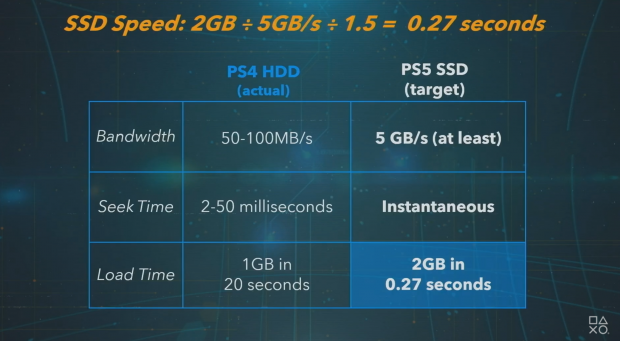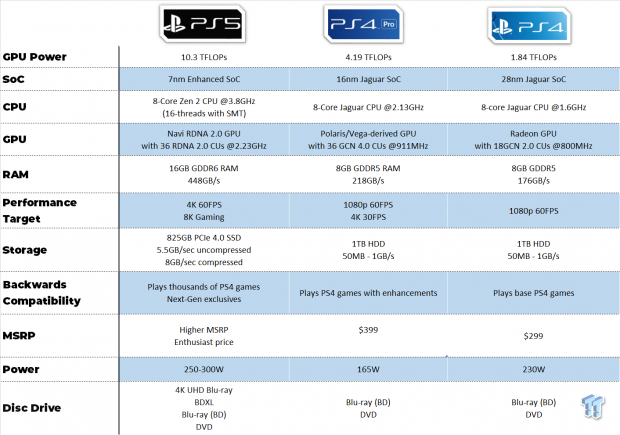Sony is empowering game developers by creating data libraries that're optimized for PS5's advanced next-gen rendering techniques, including ray tracing.

In its recent 2020 Corporate Report, Sony briefly mentions how it's helping game devs streamline data and asset management on the PS5. The next-gen PlayStation 5 SSD storage hardware is monumentally fast, and is capable of blasting uncompressed data at 5.5GB/sec speeds across a 6-channel memory controller and PCIe 4.0 x4 interface.
The SSD can feed data to RAM, GPU, and CPU components at never-before-seen levels for consoles, leading to instantaneous loading sequences, global illumination techniques like ray tracing, variable rate shading optimizations to significantly improve frame rates, and bigger, more robust worlds.
To get the most out of the hardware, though, Sony has to optimize data management on a software, OS, and toolset level.
Sony hasn't talked much about this process. Microsoft, however, has been incredibly transparent on the Xbox Series X's architectural design; They've talked in length about the Velocity Architecture, and DirectX 12 Ultimate, which allows ray tracing and other optimizations. Sony, however, has been mute on the subject. Despite the silence, developers praise the PlayStation 5 and say it's the easiest console to develop games for.
Now in its recent corporate report to investors, Sony touches on the subject. The company says it's creating value by strengthening relationships with developers. One key way it's doing this is by making game development easier using unspecific custom tools and data optimization features.
The specifics are shrouded in mystery, but the gist is Sony wants ray-traced visuals to be incredibly easy to achieve on the PlayStation 5.
"Custom I/O systems with integrated ultra-high-speed custom SSDs, for instance, can substantially reduce game load times, dramatically changing game experiences for users.
"The PS5 supports ray tracing technology to simplify the rendering process, a major burden for game creators.
"For ray tracing to be effective it must be fast, requiring not only superb hardware performance, but excellent software to make the most of the hardware. To draw the best from hardware performance, we are building data structures essential to faster ray tracing and developing libraries to offer game creators, whose voices we will be considering throughout the process."

Read Also: PlayStation 5 SSD destroys loading screens in new Ratchet & Clank game
There hasn't been much discussion on the data management and optimization tools. PlayStation 5 architect Mark Cerny lightly discussed this topic during the March presentation, but the information was mostly concerned with speed, efficiency, and how the storage will revolutionize how games both made and played.
"We're talking two orders of magnitude faster, meaning very roughly 100 times faster than PS4. Which means at 5GB/sec on the SSD that the game boots in a second.
"There are no load screens. The game just fades down and loads a half-dozen gigabytes, and fades up again. Same for a reload. You immediately get back into the game after you do. And fast-travel becomes so fast that in a blink of an eye you're present," PS5 architect Mark Cerny said in an early March presentation.

"Our goal with the PS5 isn't just that the SSD would be 100x faster. It's that game loads and streaming would be 100x faster as well. So every single potential bottleneck needed to be addressed. And there are a lot of them."
"To solve these issues, we built a lot of custom hardware, namely a custom flash controller and a number of custom units in our main chip."
Sony may reveal more specifics on these data libraries and structures during the upcoming PS5 teardown event, but it's more likely consumers won't really get much info on the topic.
The PlayStation 5 is due out Holiday 2020. No pricing or exact release date information has been confirmed, but we suspect the system will cost $499 and launch on November 13.
There will be two PlayStation 5 versions: A digital-only system, and a disc-based system.
Check below for confirmed side-by-side PlayStation generation specifications:



